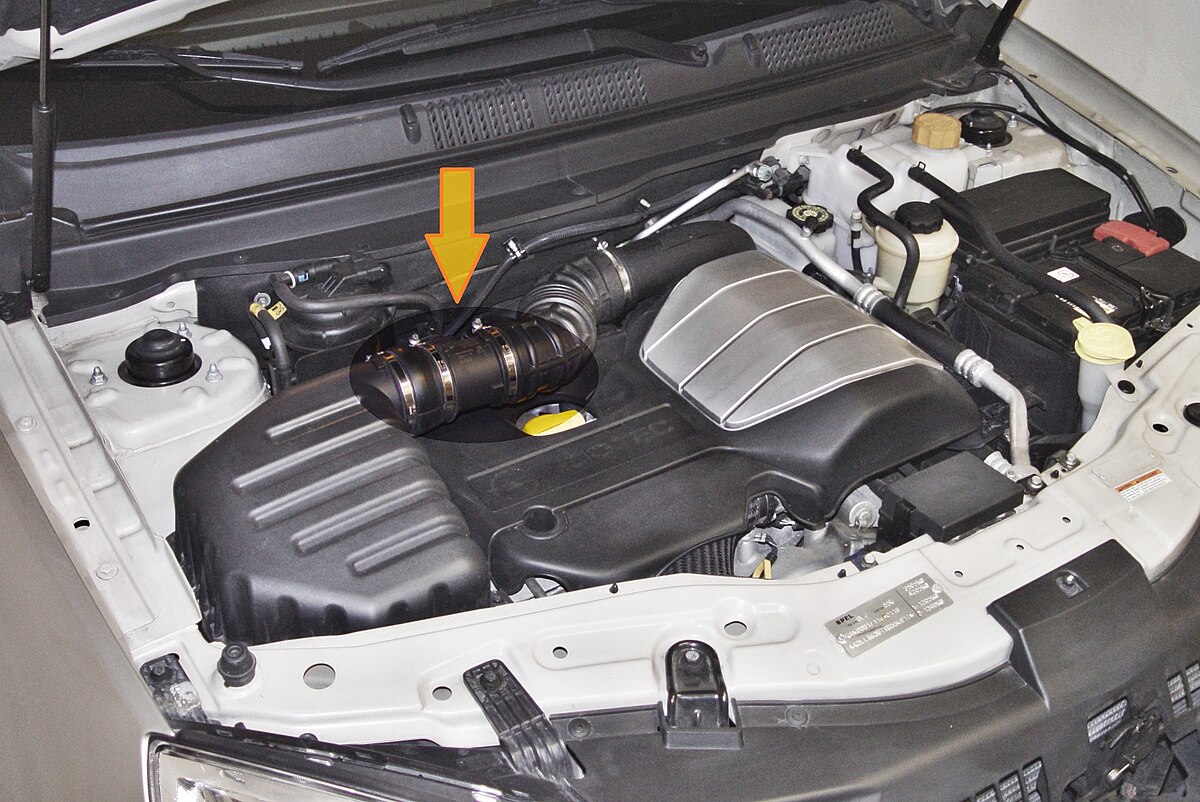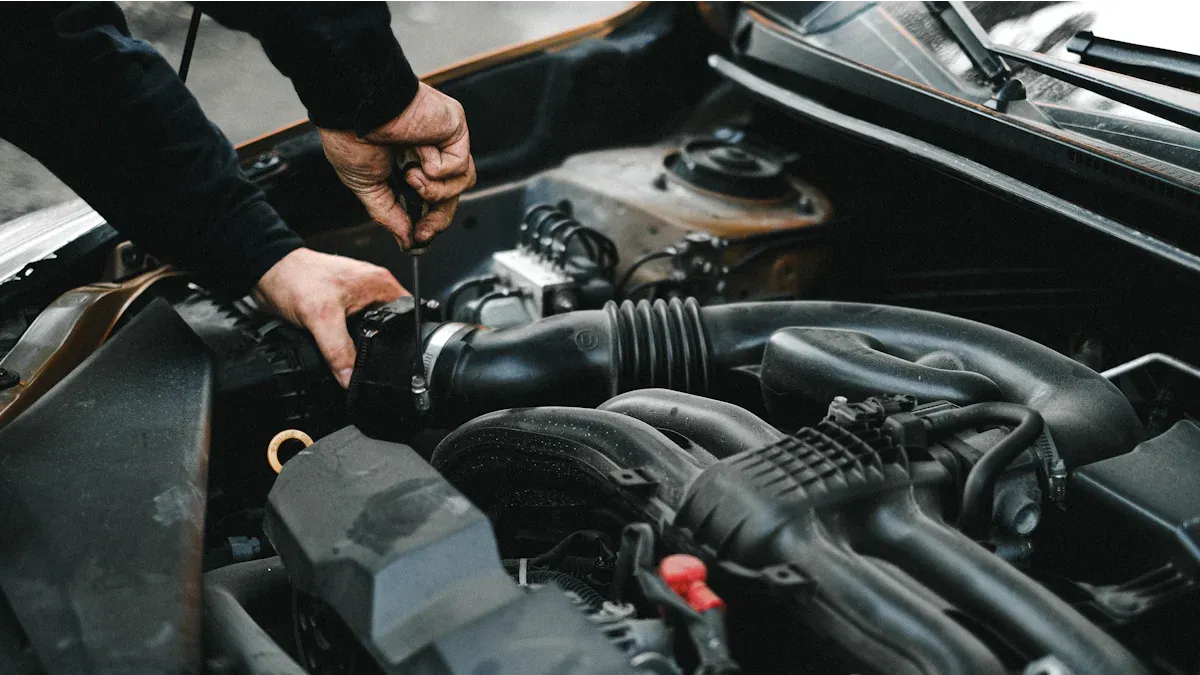How MAF Sensor Cleaner Cleans Contaminants and Restores Engine Performance
The engine in your car needs two main things to run: air and fuel. For your car to run well, it needs the right mix of air and fuel. The car’s computer makes sure this mix is perfect. It gets information from many sensors. One very important sensor is the Mass Airflow (MAF) sensor. When the MAF sensor gets dirty, it can cause a lot of problems. Your car might not run smoothly, and it could use more gas than it should.
This is a long and full guide about the MAF sensor. We will talk about everything you need to know. We will look at what the sensor does. We will help you figure out the signs of a dirty sensor. Then, we will give you clear directions on how to clean it yourself. Using a special MAF sensor cleaner is an easy job that can fix many problems. It can also save you a lot of money at the auto shop.
But cleaning the sensor does not always fix the issue. Sometimes, the sensor is broken and you need a new one. We will also talk about the signs of a broken MAF sensor. This will help you know when it is time to stop cleaning and buy a new part. This guide will give you the knowledge to fix your car. You will be able to make your car run better and make smart choices about its care.

The Mass Airflow Sensor is Very Important
Before we talk about cleaning, you need to know what the MAF sensor does. It is a small but very important part of your engine. You can find it in the big tube that carries air to the engine. It sits right after the air filter, but before the part called the throttle body. The only job of the MAF sensor is to measure how much air is going into the engine. It measures the mass of the air, which means it weighs the air.
This measurement is so important for your car. The MAF sensor sends the air measurement number to the Engine Control Unit (ECU). The ECU is the main computer for the engine. The ECU uses the number from the MAF sensor to do a very important calculation. It figures out the perfect amount of fuel to spray into the engine's cylinders. This perfect mix of air and fuel is needed for the engine to burn the fuel the right way. When the mix is right, you get good power from the engine. The car runs smoothly, and you get the best gas mileage.
There are two main kinds of MAF sensors. One is the "hot wire" type. This kind has a very thin, hot wire. Air flowing past the wire cools it down. The more air that flows, the cooler the wire gets. The sensor measures how much electricity it takes to keep the wire hot. That measurement tells the computer how much air is coming in. The other kind is the "hot film" type. It works in a similar way, but it uses a small heated film instead of a wire. Both types are very delicate.
Over many thousands of miles, the sensor can get very dirty. Tiny bits of dust, dirt, oil mist from the engine, and even pollen can get past the air filter. These bits of dirt stick to the hot wire or film. This dirt creates a layer of junk on the sensor. This layer of junk acts like a blanket. It stops the sensor from feeling the true amount of air flowing past it. Because of this, the sensor sends the wrong information to the car's computer. The computer then gets a wrong idea about how much air is in the engine. This one small, dirty part can lead to a lot of big engine problems.
How to Know if Your MAF Sensor is Dirty
A dirty MAF sensor will not make your car stop working all of a sudden. But it will make your car run poorly. The problems usually start small. Then they get worse over time. You will notice things are not right with how your car drives.
One of the first and most common problems is bad gas mileage. You will see that you have to buy gas more often. Your car’s fuel economy will go down. This happens because the dirty MAF sensor is under-reporting the air. It tells the computer there is less air than there really is. So the computer thinks it needs to inject less fuel. But then other sensors, like the oxygen sensor, tell the computer the mix is wrong. The computer gets confused and often ends up injecting too much fuel to be safe. This is called running "rich." When your engine runs rich, it wastes a lot of fuel.
Some sensors react more strongly than others, such as the knock sensor. When a knock sensor begins to malfunction, the vehicle will usually show some obvious signs. The check engine light will illuminate first because the computer has detected a problem. The engine may make a metallic knocking or knocking noise, especially when accelerating or going uphill. The engine may feel weak or sluggish, sometimes difficult to start, and may not run as smoothly as before.

Image Source: pexels
You will also feel problems with the engine. When you are stopped at a light, the engine might idle badly. An idle is when the engine is running but the car is not moving. A bad idle can feel like a shaking or a shuddering. The engine speed might go up and down. This happens because the computer is trying to fix the air-fuel mix over and over. The dirty sensor gives a bad reading, so the computer adjusts the fuel. Then the engine runs poorly, so the computer tries to adjust again. This creates an unstable and rough feeling.
When you are driving, you will feel other issues. When you press the gas pedal to go faster, the car might not respond right away. It might hesitate or feel like it is stumbling. It could even jerk forward. This is a big sign of a bad MAF sensor. When you want to accelerate, the engine needs a lot more air and a lot more fuel very quickly. But the dirty sensor cannot measure the rush of new air correctly. It sends slow or wrong information. So the computer does not add enough fuel at the right moment. This causes the engine to struggle and hesitate. You will also feel a general loss of power. The car will feel slow and weak. It will not be as fun or as safe to drive.
A very common sign is the Check Engine Light turning on. This light on your dashboard means the car's computer has found a problem. A dirty or failing MAF sensor is a common reason for this light to come on. If you can get the codes read at an auto parts store, you might see specific codes. The most common codes for MAF problems are P0101, P0102, and P0103. The code P0101 means the sensor's reading does not make sense with what other sensors are saying. The code P0102 means the sensor's signal is too low or gone. The code P0103 means the signal is too high. Seeing any of these codes points strongly to a MAF sensor issue.
P0100: Malfunction of the MAF Circuit
P0101: Range/Performance of MAF Circuit
P0102: Low MAF Circuit Input
P0103: High MAF Circuit Input
P0104: Intermittent Malfunction of the MAF Circuit
A malfunctioning or contaminated MAF sensor is another common cause of P0171 System Lean (Bank 1) and P0174 System Lean (Bank 2).
In some bad cases, you might see black smoke coming from your car's exhaust pipe. This is a clear sign that the engine is running very rich. The black smoke is actually soot, which is unburnt fuel. This happens when the computer injects way too much fuel for the amount of air. All that extra fuel cannot be burned. So it comes out as smoke. This is bad for the air, and it is very bad for your car. This unburnt fuel can get into your car's catalytic converter and ruin it. A new catalytic converter is a very expensive repair. You might also find that your car is hard to start. The computer needs a good reading from the MAF sensor to start the engine correctly. If the reading is wrong, the engine might not start on the first try, or it might start and then stop right away.
How to Clean Your MAF Sensor
Cleaning your MAF sensor is an easy and cheap job that most people can do themselves. It can solve many of the problems we talked about. If you have the right tools and are careful, you can make a big difference in how your car runs. It should take you less than an hour.
Get Your Tools and Cleaner Ready
The most important thing you need is a can of MAF Sensor Cleaner. You must use this special cleaner. Do not use anything else. Do not use brake cleaner, carburetor cleaner, or any other chemical. Those cleaners are very strong. They can leave behind a film that will ruin the sensor. Or they can even melt the plastic parts or damage the very thin sensor wires. You can buy MAF sensor cleaner at any auto parts store. You will also need some simple tools to take the sensor out. This is usually a Phillips head screwdriver or a small socket set with a ratchet. Some cars use special screws called security Torx bits. You might need to buy a special bit for these. It is also a good idea to have gloves to keep your hands clean and safety glasses to protect your eyes.
The Steps to Clean the Sensor
First, you need to be safe. Make sure your car is turned off and the engine is cool. Working on a hot engine can cause bad burns. It is also best to work in a place with good airflow, like outside or in an open garage. The cleaning spray has strong fumes. For extra safety, you can disconnect the negative terminal from your car's battery. This will prevent any electrical problems.
Now, find the MAF sensor. Open the hood and look for the air filter box. This is the big plastic box where the air enters the engine. Follow the large plastic tube that comes out of that box and goes toward the main part of the engine. The MAF sensor is located on this tube. You will see it because it is a small part with a wiring harness and an electrical plug connected to it.
The next step is to take the sensor out. First, you must unplug the electrical connector. There is usually a small plastic tab you have to press or pull to release the plug. Be very careful. The plastic can get old and break easily. Do not pull on the wires themselves. Once it is unplugged, you can remove the screws or bolts that hold the sensor in the tube. There are usually two of them. Keep these screws in a safe place so you do not lose them. After the screws are out, you can gently pull the MAF sensor straight out of the tube. It might be a little snug, so you may need to wiggle it a little.
Now you are ready to clean it. Hold the sensor by its plastic housing. Do not touch the inside parts. You will see the very tiny and delicate sensor wires or a small film inside. These are the parts that you need to clean. Take your can of MAF sensor cleaner. Attach the little straw to the nozzle to get a precise spray. Hold the can about 4 to 6 inches away from the sensor wires. Give the wires and film 10 to 15 short sprays. Make sure to spray them from all sides. The cleaner is strong and will dissolve the dirt and oil.
The most important rule of this whole job is this: do not ever touch the sensor wires or film. Do not use a cloth, a brush, a cotton swab, or your fingers. These parts are so thin and fragile that the smallest touch can break them. If you break them, the sensor is ruined, and you will have to buy a new one. Just let the spray cleaner do all the work.
After you have sprayed the sensor well, you must let it dry. This is a very important step. The sensor must be 100 percent dry before you put it back in the car. Just set it down on a clean, dry towel and let it air dry. Do not use a hairdryer or compressed air to speed it up. This could damage it. The special cleaner is made to evaporate completely and leave no residue behind. This can take anywhere from 30 minutes to a full hour, depending on the weather. Be patient. Putting it back while it is still wet can cause it to short out and fail.
Once you are sure the sensor is totally dry, it is time to put everything back together. Carefully slide the sensor back into its spot in the air intake tube. Put the screws back in and tighten them so they are snug. Do not overtighten them, or you could crack the plastic. Then, plug the electrical connector back in. You should hear or feel a little click when it is secure. If you disconnected the battery, now is the time to reconnect the negative terminal.
Close the hood and start the car. The engine might run a little bit strange for the first few seconds. This is normal. The car’s computer is re-learning and adjusting to the clean sensor's new, correct readings. Let the car idle for a few minutes. Then, take it for a test drive. You should notice a difference right away. The idle should be smoother, and the hesitation should be gone. Your car should feel like it has its power back. If the Check Engine Light was on, it might turn off by itself after a few drives.
When You Need a New MAF Sensor
Cleaning the MAF sensor works most of the time. But it is not a magic fix for every problem. Sometimes, the sensor is just broken and needs to be replaced. How do you know when it is time for a new one?
The clearest sign is if you clean the sensor properly and nothing changes. If your car has the exact same problems after you clean the sensor and let the computer adjust, the sensor itself has likely failed electronically. The cleaning only removes dirt. It cannot fix a broken electronic part.
Also, look at the sensor closely when you have it out. If you see any physical damage, you need a new one. Look for broken wires, a cracked plastic housing, or anything that looks burnt. If the sensor is damaged, it cannot work right.
Another big sign is a stubborn Check Engine Light. If you clean the sensor, and the light goes off, but then comes back on a day or two later with the same MAF sensor codes, the sensor is failing. This means it is working sometimes and failing other times. An inconsistent sensor is a bad sensor.
There are a couple of simple tests you can try if you are not sure. One is the "unplug test." While the engine is off, unplug the MAF sensor's electrical connector. Then start the car. The Check Engine Light will come on right away, but pay attention to how the engine runs. Without the MAF sensor, the car’s computer will switch to a default or "limp" mode. If the engine suddenly runs much better and smoother in this mode, it is a very strong sign that your MAF sensor was providing bad information. A second simple test is the "tap test." With the engine idling, gently tap on the MAF sensor's housing with the handle of a screwdriver. If the engine stumbles, stalls, or changes its idle speed with each tap, the sensor has an internal electrical problem and needs to be replaced.
Finally, think about the age of your car. All electronic parts have a lifespan. They do not last forever. If your car is old and has very high mileage, the MAF sensor may have just worn out from years of use. In this case, cleaning is just a temporary fix, and a new sensor is the best long-term solution.
Where to Buy Your New MAF Sensor
If you have decided that you need a new MAF sensor, it is important to buy a good quality part. A new sensor is an investment in your car's health. A cheap, low-quality sensor might not work correctly right out of the box. Or it could fail after just a few months. This would bring back all the old problems and waste your time and money.
At [https://www.joydo-ele.com/], we sell high-quality MAF sensors that you can trust. We know how important this part is for your engine. We offer sensors that are made to be just as good as, or even better than, the original part that came with your car. We make it simple to find the right part for your car, truck, or SUV.









